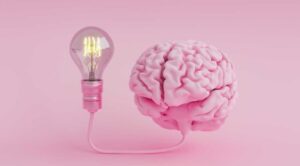A famous author and comedian Gülse Birsel famously says “What we call ‘brain’ is in fact a 1.5 kilo of fat and water. Do not take it that seriously. When you laugh, your brain is easily fooled and thinks that everything is in order and naively secretes serotonin. Therefore, smile whenever you can! At the very least, people will believe you are doing great.”
Laughing and smiling are among the fundamental gestures of mankind. Laughing is such a multi-dimensional action that not only physiologists, neurologists, psychologists, sociologists and philosophers are interested in it, but also the authors and artists dabble with it to a great extent. People may laugh out of happiness, anger, boredom, or just to look sympathetic to others. Whatever the reason is, laughter has a tremendous positive affects to the body and soul.
In this article, we examine the act of smiling at a neuroscientific point of view. There are 2 different types of smiling in the human anatomy, which are the conscious social smile and the real smile.
Conscious social smile involves conscious activation of the labial muscles at the side of the mouth.When we smile, the large labial muscles contract and the lips tighten.The most obvious distinction of a genuine happy smile and a conscious social smile is revealed by the muscle surrounding the eyelid, which is called the orbicularis oculi.This muscle’s primary function is to close the eyelid and it is not activated in the conscious social smile. In social smile, signals are sent from the frontal area of the brain to the motor and premotor areas.Various scientific studies show that even this kind of smile triggers a slight sense of happiness. In other words, even a conscious social smile measures, albeit small, a real sense of happiness.
The description of a real smile has been made by the French neurologist Guillarne Duchenne for the first time.Emotions are transmitted to the facial muscles through the activation of the autonomic nervous system and the deep brain structures, such as the Amygdala, Orbitofrontal Cortex, Anterior Cingulate Cortex and Insula, and are reflected in the face via the movements of facial muscles. In a real smile, the facial muscles cause the lower part of the eyelids to swell and the corners of the eyes to wrinkle, revealing the characteristic lines.The unintentional function of these muscles makes a true heartwarming smile impossible to be produced on conscious demand. In an intimate smile, signals originating from deep brain structures, such as the Amygdala, are conveyed to the motor cortex.A real smile, which includes the movement of both the labial and the ocular muscles, is usually a reflection of a happiness.
Famous Quotes on Laughter and Smile:
“Laughter is the shortest distance between two people.” – Victor Hugo
“One shall not forget the fact that a woman never smiles only with her mouth, but also with her eyes. If her eyes twinkle with joy, a woman is happy.”– Cemal Süreya
“The human race has one really effective weapon, and that is laughter. Because the real enemies we face are pain and sorrow, not each other.” – Mark Twain
“Wrinkles should merely indicate where smiles have been.” – Mark Twain
“The best feeling in the world is to know that you are the reason of one true smile.” – Ayşe Kulin
“Laughter is the tonic, the relief, the surcease from pain!” – Charlie Chaplin





